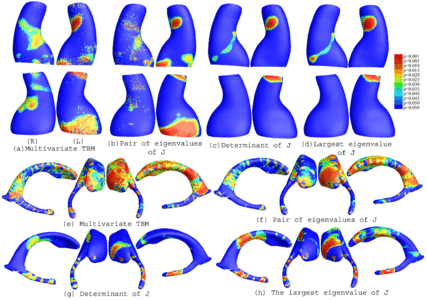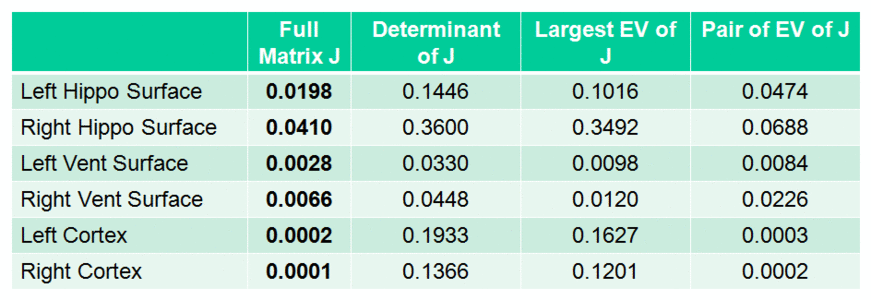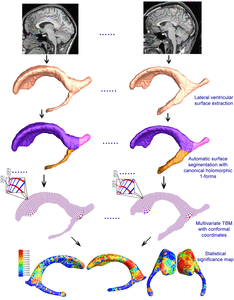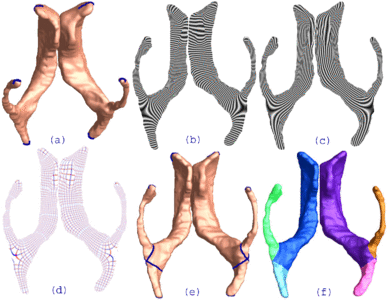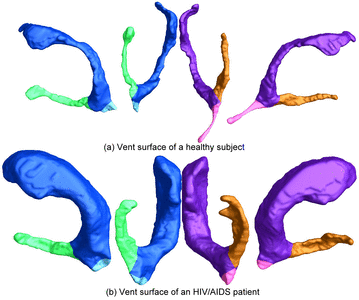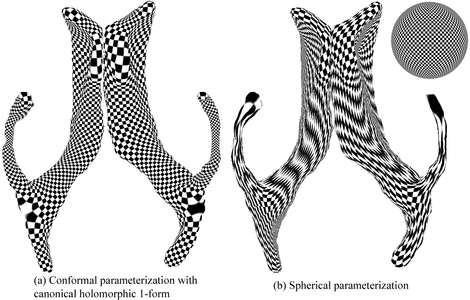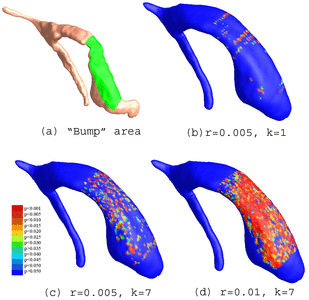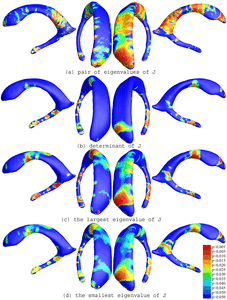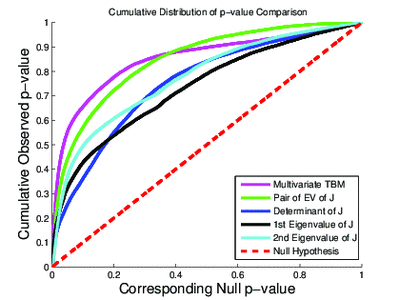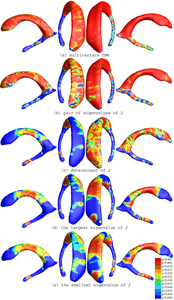Multivariate Tensor-based Morphometry on Surfaces: Application to Mapping Ventricular Abnormalities in HIV/AIDS
Yalin Wang, Jie Zhang, Boris Gutman, Tony F. Chan, James T. Becker, Howard J. Aizenstein, Oscar L. Lopez, Robert J. Tamburo, Arthur W. Toga and Paul M. Thompson
Abstract
Here we developed a new method, called multivariate tensor-based surface morphometry (TBM), and applied it to study lateral ventricular surface differences associated with HIV/AIDS. Using concepts from differential geometry and the theory of differential forms, we created mathematical structures known as holomorphic one-forms, to obtain an efficient and accurate conformal parameterization of the lateral ventricular surfaces in the brain. The new meshing approach also provides a natural way to register anatomical surfaces across subjects, and improves on prior methods as it handles surfaces that branch and join at complex 3D junctions. To analyze anatomical differences, we computed new statistics from the Riemannian surface metrics – these retain multivariate information on local surface geometry. We applied this framework to analyze lateral ventricular surface morphometry in 3D MRI data from 11 subjects with HIV/AIDS and 8 healthy controls. Our method detected a 3D profile of surface abnormalities even in this small sample. Multivariate statistics on the local tensors gave better effect sizes for detecting group differences, relative to other TBM-based methods including analysis of the Jacobian determinant, the largest and smallest eigenvalues of the surface metric, and the pair of eigenvalues of the Jacobian matrix. The resulting analysis pipeline may improve the power of surface-based morphometry studies of the brain.
Figures (click on each for a larger version):
Related Publications
- Wang Y, Zhang J, Gutman B, Chan TF, Becker JT, Aizenstein HJ, Lopez OL, Tamburo RJ, Toga AW, Thompson PM, Multivariate Tensor-based Morphometry on Surfaces: Application to Mapping Ventricular Abnormalities in HIV/AIDS, NeuroImage, 49, February 2010, pp. 2141-2157
- Wang Y, Chan TF, Toga AW, Thompson PM, “Shape Analysis with Multivariate Tensor-based Morphometry and Holomorphic Differentials”, 12th IEEE International Conference on Computer Vision (ICCV), Kyoto, Japan, Sep. 2009, pp. 2349-2456
- Wang Y, Chan TF, Toga AW, Thompson PM, “Multivariate Tensor-based Brain Anatomical Surface Morphometry via Holomorphic One-Forms”, 12th International Conference on Medical Image Computing and Computer Assisted Intervention – MICCAI 2009, London, UK, Sep. 2009, pp. 337-344
